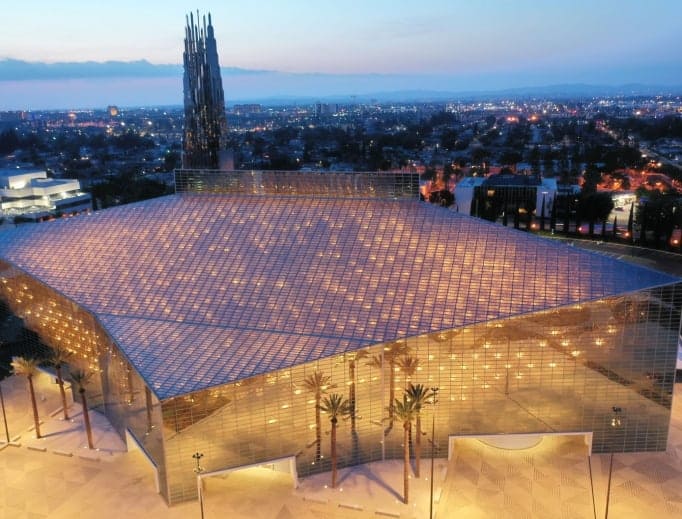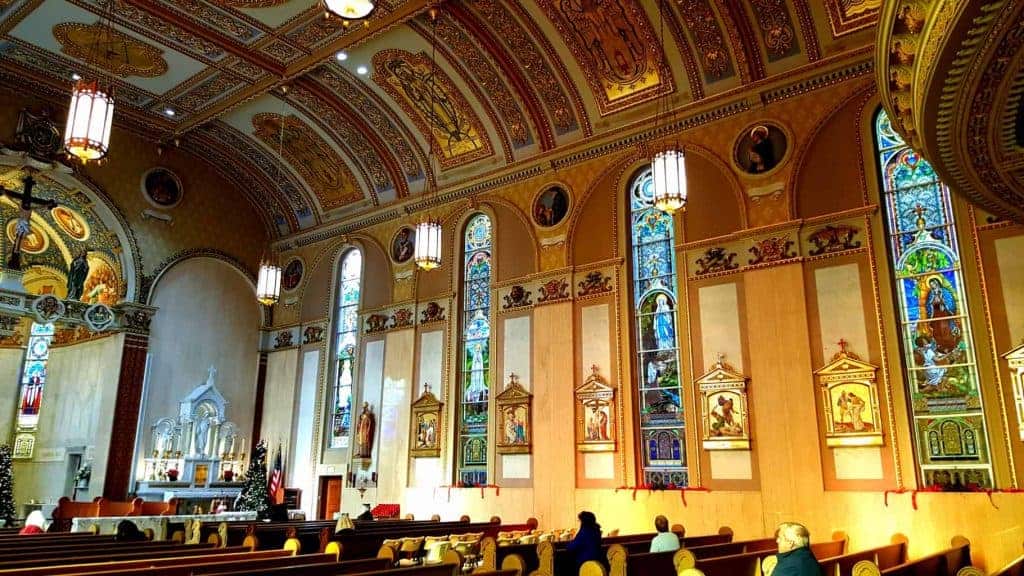Have you seen images of the new cathedral for the Diocese of Orange, California? Millions of dollars ($71 million to be exact) were spent to refit the Protestant “Crystal Cathedral” into a Catholic cathedral, now called Christ Cathedral. The building was purchased by the diocese for $60 million several years back and was consecrated just the other day. What do you think?


No one will doubt that this is an impressive, striking structure: its vast airiness; the enormous quantity of glass; the intensity of the sunlight flooding every square inch; the white, sleek and smooth interior. If J.J. Abrams were to design a Catholic church, most likely it would look very much like Christ Cathedral. It’s minimalist spiritual chic meets bridge of the Enterprise.

But how does the new cathedral measure up as a Catholic church?
I’m not impressed. Many have observed that it’s great that a Catholic cathedral has taken over a Protestant church. Ok. But then, according to that logic, we could also say that it’s the Catholics who have acquiesced to a Protestant paradigm when it comes to how our churches look. And this cathedral proves it.
The rupture that took place during the Protestant Reformation witnessed a violent break from the traditional layout of churches. Older churches were vandalized to configure to new theology and newly constructed churches across Protestant Europe reflected the revolutionary change. Altars were replaced with tables and moved closer to the people. The liturgy, or “service” was presented as a common meal instead of a sacrifice. Barriers and thresholds, like Communion rails and rood screens, were removed to deemphasize (or simply erase) the distinction between the ordained ministers and the laity. Sacred art was seen as idolatrous and destroyed or substantially reduced. The stark minimalism inside Protestant churches was intended to harken back to the simplicity of the early Church, before “Roman superstition” took over.
For a fascinating look at this phenomenon, read Eamon Duffy’s extraordinary book, The Stripping of the Altars: Traditional Religion in England 1400-1580. In terms of the placement and arrangement of liturgical items, I am sure Archbishop Cranmer who spearheaded the reformation under Henry VIII (and Edward VI) in England and, of course, Martin Luther would nod in approval at the look of the newly minted cathedral. In terms of its layout, it largely accepts the Protestant premise on church design.
There’s a lot to point out here. I would refer readers to the article I previously posted on CCC, “The Four Marks of a Catholic Church.” In it, I discuss Oratorian Uwe Michael Lang’s excellent point about verticality, orientation, thresholds and sacred art in Catholic churches. According to Lang, if these characteristics are missing, there is a serious flaw with the building as a Catholic church. For its part, Christ Cathedral lacks most of these four qualities. (One could make the case that verticality is present in the spacious building.) Lang’s point is that these distinguishing features did not just appear at random. Rather, they developed organically over the course of centuries to bolster theological truths about what was taking place at Mass, and to open people’s eyes to the transcendent horizon beyond the here and now. Working together, verticality, orientation, thresholds and sacred art help to inform and catechize the laity about the nature of the liturgy, and even our place in the cosmos. Remove them and, as Duffy shows, the entire edifice of a Catholic culture crumbles.
There’s another feature of Christ Cathedral that deserves attention, and that is its use of sunlight. Unfiltered rays of blinding light pour into this vast interior from every angle. But to what effect? Look at these two images depicting the interiors of Catholic churches with traditional stained glass.


In the images above, the sunlight is not raw or dazzling, but rather filtered and soft. Compare that to the blinding light inside Christ Cathedral.

In describing the use of stained glass in Gothic churches, Catholic architect Pat Haggerty says,
This luminosity [resulting from stained glass] was born of a system of thought that saw light as the purest of form and therefore closest to God. The light filtering through medieval stained glass is not a bright light, but instead has been transformed and recalls Revelation’s description of Heaven’s walls as adorned with jewels. Stained glass does not make a space bright. . . . In fact, stained glass is dull without sunlight–and even with it, the actual light levels are reduced. What does happen is that sunlight is transformed and thus the space within is also transformed.
Sunlight in Catholic churches isn’t supposed to be unfiltered and blinding. By passing through the stained glass, the filtered and transformed sunlight inside the church reminds us of our own interior transformation through Christ and the sacraments and, more broadly, how His grace elevates what is natural to the supernatural level. While dazzling and striking, Christ Cathedral unfortunately represents a major capitulation to an errant and iconoclastic vision that the Church has strenuously resisted for centuries.

